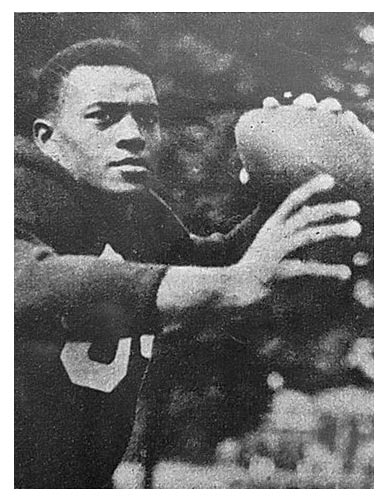By Woodrow Carroll
There is a strong likelihood that the collegiate football season will be a lost cause. The Fall schedule is in real danger of being a non-starter across the board. If by chance, what would have been the Fall schedule ends up being played next Spring, we have to wonder how that will play out.
It is incongruousness to think about bowl games with the regular season in jeopardy. Still, we might be well served by recalling memorable moments in the pigskin past as a morale booster. With that in mind, here is a look at the University of Illinois’ 1947 Rose Bowl game January 1, in Pasadena, Calif. against UCLA., 10-0.
The UCLA Bruins represented the Pacific Coast Conference and the Fighting Illini, 7-2, of the Big Nine in what became a Rose Bowl tradition between the two conferences. Big Nine? At the time the Conference we have come to know as the Big Ten had nine schools. The University of Chicago had pulled out prior to World War II and Michigan State had yet to join. Of course, Big Ten is a bit of a misnomer now with 14 schools.
Many on the West Coast were far from pleased to see Illinois in the Rose Bowl. Army was the glamor team at the time, and UCLA, with its unblemished record, would have been the ideal opponent, in the minds of many.
Illinois had fallen at the hands of Notre Dame and Indiana early in the season, before reeling off five straight victories.
Ray Eliot was the Illinois head coach in his fifth season in Champaign. The previous season, in 1945, Illinois finished with a record of 2-6-1. Schedules and personnel were changing drastically. In 1945 Illinois had Great Lakes on the schedule, which tells us the effect World War II.
Game time weather for the 1947 Rose Bowl was a pleasant 65 degrees.
Julius Rykovich gave Illinois an early 6-0 lead with a one-yard run. The score didn’t hold up long. UCLA quarterback Ernie Case scored to make the score 7-6 UCLA at the end of the first quarter.

The second quarter proved to be fulfilling to Illini backers. In short order, Buddy Young, East Aurora High School graduate, Paul Patterson, and quarterback Perry Moss scored on short runs for Illinois to make the score, 25-7.
UCLA did have a glimmer of hope when Al Hoisch returned the kickoff 103 yards for a score after the Moss touchdown. Hoisch’s record-setting run made the Illinois lead 25-14. at halftime.
There was no scoring in the third quarter. Illinois put the game in the victory column with a 20-0 burst in the final stanza. Another Young touchdown was followed by interception returns for touchdowns by Russ Steger and Stan Green to make the final score, 45-14, in favor of Illinois.
Green’s touchdown tells us the kind of day it was for Illinois. A third-string tackle, Green was one of 42 players Eliot dressed for the game. All 42 played against UCLA.
Perhaps the only dark note In Illinois’ memorable victory was the extra point showing of Illinois’ Don Maechtle. He connected on only three of his seven extra-point tries, however, with seven touchdowns, extra points often carry little weight.
The Illinois victory in 1947 set off a glorious run for the Conference which shortly became the Big Ten with the addition of Michigan State. From 1947 through the 1959 Rose Bowl, the Big Ten was the victorious team in 12 of those 13 games. Only Wisconsin’s 7-0 loss to Southern California in the 1953 Rose Bowl broke the mold.
By 1960 the West Coast teams had learned their lessons. Starting with Washington’s 44-8 victory over Wisconsin, the Big Ten found itself on the short end of the score more often than not.
Today, the Rose Bowl has a different image. In 2002 the Rose Bowl featured Miami, Fla. defeating Nebraska, 37-14, in the BCS championship game, the first time since 1946 the classic didn’t match Big Ten and Pac-10 teams.
We will settle for any two teams in the Rose Bowl given the uncertain nature of sports.

